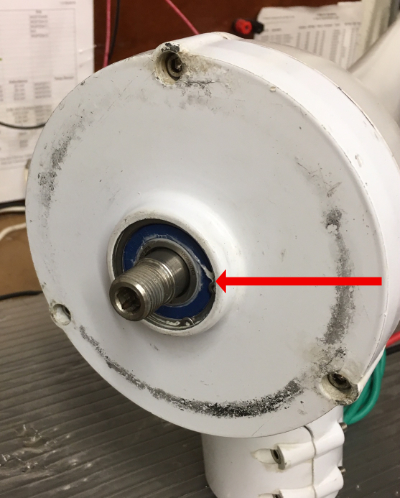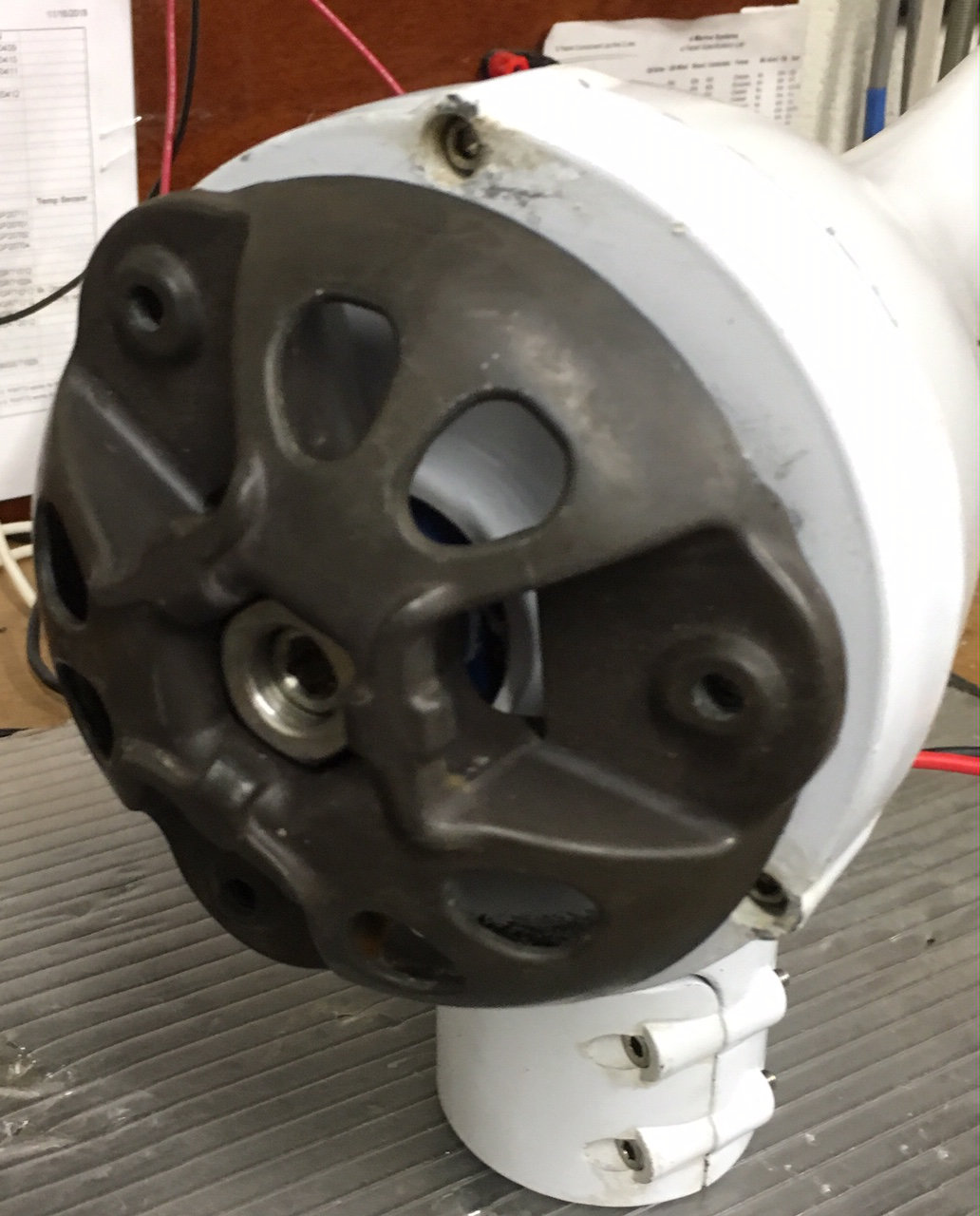Securing Your Boat’s Wind Generator in Severe Weather
Preparing your boat for a pending storm is always prudent. If you have a wind generator on board you want to add this task to the list of things to take care of prior to the arrival of the pending weather event.
This article is meant to be a general guide only. Please refer to the manufacturers instruction manual received with your wind generator for specific procedures on handling high wind events.
If you are a prudent sailor, you will have time and awareness prepare for a storm conditions. This allows time to batten down the hatches, reef or drop the sails and address the on board wind generator. Having a plan in place is highly recommended.
|
|
 |
Wind Generator Mounts
Most wind generators installed on vessels are mounted on its own mast with 2 stays. If installed with a pivoting base, the wind generator can easily be lowered or raised up for servicing or storm protection. In other installations, such as being permanently mounted on an arch or davit, the wind generator is on a fixed mast and not easily removable making it more difficult to address securing the wind generator on an approaching storm.
Dynamic or Electric Braking Understanding... How it Works.
 Most wind generators have some type of Run/Stop switch. This braking mechanism is electrical and is often referred to as “dynamic” or “electric braking”. It is not mechanical and therefore has its limitations of how much wind it can actually brake. The “brake” switch when “on” simply shorts out the wind generator stator windings. In this condition the wind generator blades will slow down to a low speed (10-20 rpm). In this electric brake mode, as the wind generator blades slowly turn they generate electrical energy which creates a reactive force against the generators stator causing the effective braking. In this condition, there is a maximum wind speed that is allowable before the turbine can overheat resulting in potential failure.
Most wind generators have some type of Run/Stop switch. This braking mechanism is electrical and is often referred to as “dynamic” or “electric braking”. It is not mechanical and therefore has its limitations of how much wind it can actually brake. The “brake” switch when “on” simply shorts out the wind generator stator windings. In this condition the wind generator blades will slow down to a low speed (10-20 rpm). In this electric brake mode, as the wind generator blades slowly turn they generate electrical energy which creates a reactive force against the generators stator causing the effective braking. In this condition, there is a maximum wind speed that is allowable before the turbine can overheat resulting in potential failure.
Winds up to 15 mph
Use the electric brake. This is an easy and excellence solution for breaking the wind generator when needed in light winds (under 15 mph) or if there are small short storms (such as a squall). When braking is used it results in heat build-up in the generators stator winding, and therefore if left in this mode under high wind conditions can cause stator overheating resulting in generator failure and an expensive repair.
Storm conditions up to 15-30 mph
In these wind conditions (unless 15 minutes or so) additional measures should be taken to help mechanically secure the wind generator dynamic break from overheating the unit. A simple solution is to use a line (1/4”inch or more) entangled or wound along the base of the wind generators blades (near the hub) creating the mechanical stop. We say entangled along the base of the blades because this is the strongest and least likely is placed to damage the blades from the mechanical stress imposed by the line. Be sure to tie off the ends of the line around the nacelle of the wind generator.
| A simple suggestion would be to pre-make a dedicated ¼” line with 3 loops with “tails” on it that would be pre-fitted to the wind generator. Utilizing a boat hook, this can be easily installed on to the wind generator prior to the storm event minimizing last-minute prepping. The tales help to assist as a grabbing point while doing the installation. The photo sequence shown is an example of one way of doing this, of course, it must be adapted to your particular wind generator and situation on board the boat. It is recommended to allow the nacelle to rotate on its horizontal bearing (yaw). Perform one or two dry runs on installing and removing the line so you can adapt a methodology that makes it easy for your particular installation. This is just an example but you may be able to adopt something similar to accomplish the same end goals to mechanically stop that blade set from turning. |
|
 |
 |
Storm conditions greater than 30MPH including hurricanes and typhoons
The prudent thing is to remove the wind generator from the mast and stow it in a safe place. This is a complicated and not easy procedure with many people abandoning this idea. As an alternative removing just the wind turbine blades may be the best solution. In this case, remove the nose cone, hub and blades of the wind generator and storing them in a safe place. Once removed protect the front of the wind generator where the hub attaches to the wind generator rotor shaft. Driving rains from a long-term heavy storm will force water past the axis bearings and into the wind generator nacelle resulting in failure. Covering this area with heavy duty plastic bag or cover will keep water from getting into the nacelle and saving on future repair costs. |
 |
One other suggestion would be to reinstalling the hub without the blades which would act to protect the axis bearing from driving rains. Be sure to remove the fuse or turn off the circuit breaker to the wind generator so no electric power is available to it. Knowing the upcoming weather and preparing your equipment accordingly will result in good success in the equipment weathering the storm. Here are a few examples of what could happen if you don't properly secure your boat's wind generator during a hurricane. This wind generator was subjected to 104 knots of wind. |
| Here is an example of what could happen if you don't properly secure your boat's wind generator during a hurricane. This wind generator was subjected to 104 knots of wind. |  |